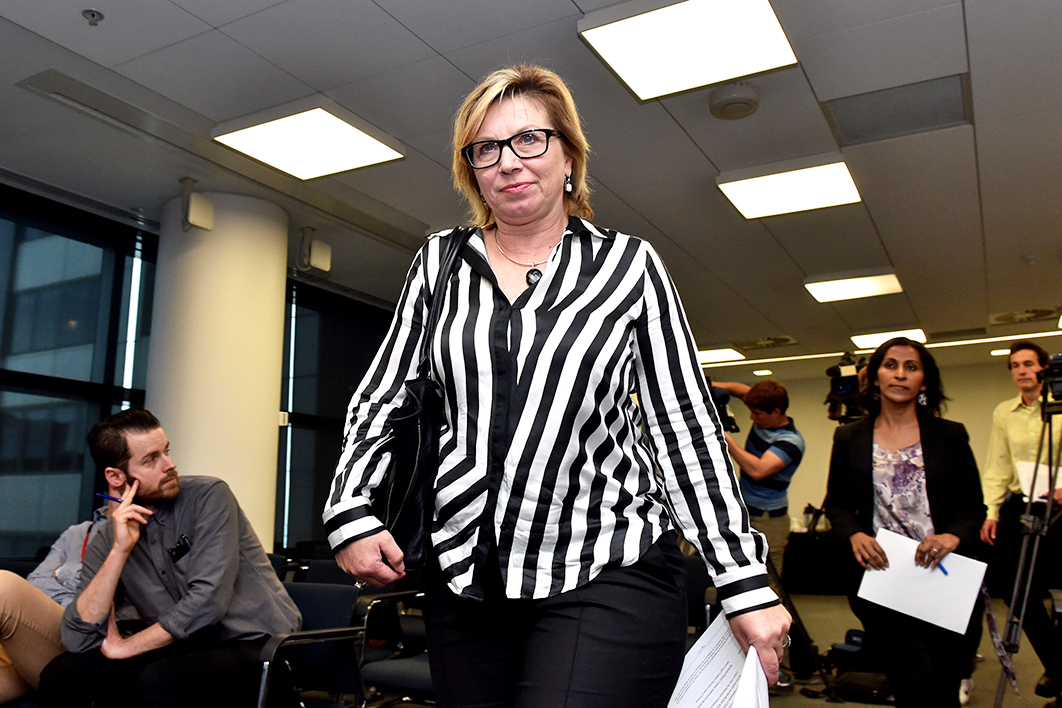See What You Made Me Do: Power, Control and Domestic Abuse
By Jess Hill | Black Inc. | $32.99 | 402 pages
It’s almost half a century since I was confronted for the first time by what is now called domestic violence, although we didn’t have a name for it then. At a meeting of Canberra Women’s Liberation, one of our members proposed that we ask the local authorities for a house to serve as a sanctuary for women and children fleeing from the terror they endured in their homes. At the time, it seemed a breathtakingly presumptuous idea, far outside the realm of even such radical imaginations as ours. Would the government simply hand over a house to a bunch like us? And, supposing it did, would the women we hoped to shelter turn up there?
It didn’t take long for those questions to be answered. Two years later, in March 1974, women from Sydney Women’s Liberation squatted in an abandoned house in Sydney’s Glebe, and Elsie, Australia’s first women’s refuge, was born. Our Canberra refuge, Beryl, was set up the next year in a house leased from the territory authority. As it turned out, the demand for these services was enormous, and other women’s shelters followed in other cities. By then, I was one of Australia’s early femocrats, heading the women’s affairs unit in the prime minister’s department, and one of my biggest challenges was finding funds for what had become a network of refuges around the country.
It’s a problem that has dogged women’s services ever since. No sooner is the funding secured than a change in government dries it up. Not surprisingly, funding is maintained and often increased under Labor, then whittled back by the Coalition. Labor governments have been more accepting, moreover, of the need for refuges specifically for women, while the Coalition will bunch them together with gender-neutral shelters run by churches or groups like the Salvation Army. For most of this past decade, despite government-initiated community awareness campaigns, funding for women’s refuges has been savagely cut, with countless women and children turned away from the few remaining ones. Yet all this is happening as the incidence of domestic violence and intimate partner homicides has surged.
This, in a nutshell, is the situation that investigative reporter Jess Hill has grappled with over four years to produce See What You Made Me Do. The work she’s put into it shows. In all my long acquaintance with the subject, I’ve never come across such a thorough examination of domestic violence — or domestic abuse, as Hill prefers to call it. In this, I don’t seem to be alone; less than a month after its release, the book was already being reprinted.
Yet while Hill and her book have had extensive coverage, her findings have tended to be cherry-picked by readers or reviewers. Rather than any incomprehension on their part, this results from the very breadth and depth of Hill’s analysis, and the difficulty of absorbing her many disturbing findings. As Helen Garner puts it on the cover, this is indeed a “shattering” book. The horror of the incidents Hill documents; the meticulous fairmindedness of her approach; the conclusions she draws — all demand attention. But the reading is necessarily hard-going. Chapter by chapter, right to the end, Hill demonstrates incontrovertibly that what Australia is now experiencing amounts to a genuine state of emergency.
Early in the book we are introduced to Rosie Batty, the 2014 Australian of the Year whose eleven-year-old son was murdered by his father in full view of other parents and children. Batty was brave enough to turn what could fairly be described as any mother’s worst nightmare into a campaign to raise awareness of the extent of family violence and the inherent risk of homicide it poses. She thus became the poster woman for domestic abuse, if at great personal cost. “In the eyes of mainstream Australia,” Hill writes, “Batty was everyone — not from the stigmatised poor or the privileged rich, but from the demilitarised zone of the white middle class.”
One thing that’s prevented appropriate responses from police and the judicial system is the “battered woman profile,” a pernicious but entrenched belief that victimhood has something to do with a victim’s personality. What else could explain a woman returning time and again to a partner who repeatedly abuses her? For answers Hill has researched as far afield as studies of brainwashing during the Korean war, and she concludes that a victim of domestic abuse can be so sapped of confidence and vitality that she’ll come to question her own reality. It can take colossal determination and energy, then, as well as help and resources, to escape.
The experience of those running crisis hotlines and women’s shelters is that on average a victim will go back as many as nine times before she can finally leave an abusive partner. She then risks his stalking, assaulting or even murdering her — risks that can multiply when children are caught in the crossfire. But while women who’ve experienced extreme abuse can exhibit a range of psychological symptoms, not to mention bodily injuries, Hill convincingly argues that there’s no such thing as a type.
After tracking survivors and their children who have escaped to “the underground,” a shadowy world of aliases and motel rooms akin to witness protection, Hill shines a light on the men who have driven them there. Perpetrators, too, come in all ethnicities and classes, but whatever their standing in the community, their methods are strikingly similar. “Speak to anyone who’s worked with survivors and perpetrators,” writes Hill, “and they’ll tell you the same thing: domestic abuse almost always follows the same script. It’s a truly confounding phenomenon: how is it that men from vastly different cultures know to use the same basic techniques of oppression?”
Here Hill identifies two different types of perpetrators, “coercive controllers” and “insecure reactors.” These are broad categories, and abusers in either can exhibit characteristics of the other. But, broadly speaking, coercive controllers tend to be practised manipulators whose techniques are often premeditated, and insecure reactors tend to be less conscious of their motives, though their responses can be more explosive and often more dangerous.
I’m aware that so far I’ve only mentioned men. Hill devotes a chapter to female abusers, but their numbers are comparatively few, their male partners often ashamed and mute, and the violence usually comes after the women themselves have copped years of abuse themselves. The fact remains that most perpetrators are men.
The literature on domestic abuse appears to fall into two camps, one holding that violence results from escalating “family conflict,” the other resting on a feminist analysis in which gender inequality is the cause. These two quite different perspectives have produced different sets of statistics. The family conflict school focuses on the number of police call-outs, overlooking the unequal power relationships in which violent incidents occur. Feminists point to the wider and less easily measured impact of patriarchy, and Hill agrees. From my own experience and on the strength of her explanations, so do I.
But what does this mean? What’s good about Hill’s approach is that it isn’t about blaming men. She goes much deeper than that. The fact that we live in a patriarchy doesn’t mean that all men are powerful. On the contrary, few men are. But patriarchal culture makes many believe that because they are men they’re entitled to be powerful, and if they aren’t, that makes them losers. Hill maintains it’s this unfulfilled sense of entitlement that fuels the rage men can feel against women.
Of course, I’m oversimplifying an insight that Hill gives many pages to. But the closer we look at how our society is structured and the values on which it’s based, the easier it is to see why domestic abuse has increased so alarmingly in recent years and why public-awareness campaigns have served to ramp up the violence by triggering a backlash.
Changing community attitudes is an excellent policy for the long term, but in the meantime other measures are necessary. What we desperately need are more refuges, more affordable housing, better schooling of police and the judiciary, more listening to women and children, more effective programs for reforming perpetrators, and a more humane, less adversarial family law regime. All this takes money, mostly government money, and there’s not much chance of that in the years of likely austerity ahead.
I’ve left out any mention of Hill’s heartbreaking chapter on abuse in Indigenous communities; in the space here I could never do the subject justice. But read the book. In the present climate it’s hard to make predictions, but it’s my bet that See What You Made Me Do will be the definitive text on domestic abuse for some time. •




